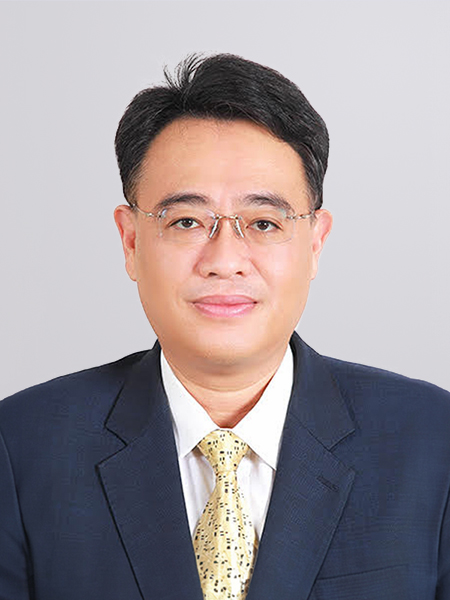

The objective of this thematic center is to explore innovative manufacturing and emerging materials in order to expedite the development and implementation of sustainability technologies for realization carbon neutral society.
Key Research Interests

Energy-efficient and energy generation devices
- Perovskite solar cells show photovoltaic hysteresis and stability issues, we use strategies such as using additives to reduce defects, controlling grain growth, and minimizing defects at grain boundaries and interfaces. For energy saving material, we have developed a robust Quantun-dot@Vitrimer thin film composite for backlighting LED that can be physically and chemically recycled. We have also developed energy-saving broadband infrared LEDs. For hydrogen generation studies, our subjects include developing efficient electron-hole generation, non-noble metal composite catalysts, and electrode structure for efficient gas-liquid separation.
Next-Generation Batteries
- We have developed a new liquid chemical synthesis method for solid-state electrolytes with high ionic conductivity, simultaneously achieving mass production and structural control. We also utilize moisture- and atmospheric-dependent in-situ synchrotron X-ray powder diffraction techniques to track their structural changes. We will eventually apply them to solid-state batteries.
Advanced Energy Material Simulation
- We actively developed machine learning frameworks investigating properties of complex structural and energy materials, including complex perovskites materials, high entropy alloys, and solid state electrolytes. We are also actively involved in exploring applications of AIGC and quantum machine learning in predicting material properties.
Focusing project

employ nitride-based metasurfaces and metamaterials as perfect absorbers to maximize the utilization of solar radiation for highly efficient thermal energy conversion
The first core project aims to employ nitride-based metasurfaces and metamaterials as perfect absorbers to maximize the utilization of solar radiation for highly efficient thermal energy conversion. By leveraging their exceptional light absorption capabilities, these engineered nanostructures can concentrate and retain solar energy with minimal losses, significantly enhancing thermal-driven catalytic reactions. Specifically, by leveraging the strong light-matter interactions in metasurfaces, the system can generate highly localized, intense thermal fields that not only improve energy conversion efficiency but also create a high-temperature microenvironment (~2000 ℃) ideal for photochemical synthesis. By precisely tuning the optical and thermal properties of nitride-based metasurfaces, the localized heating effect can dramatically increase the catalytic activity, boosting reaction rates by at least eight times compared to conventional methods (~10 mmole gcat -1 h-1). This advancement not only optimizes solar energy utilization but also establishes a high-temperature microenvironment that is ideal for accelerating green fuel production, particularly ammonia synthesis. Beyond fundamental research, this project paves the way for industrial-scale solar-thermal catalytic processes, offering a transformative approach to renewable energy technologies.

Designing and Developing Solid-State Electrolytes for Next-Generation Batteries
The second core project aims to develop solid-state electrolytes to realize high-efficiency solid-state batteries. In the pursuit of solid-state electrolytes, the focus primarily lies on organic-inorganic composites and halides. For composite materials, our aim is to develop high-ion conductivity polymers and blend them with inorganic nanoparticles to mitigate the high interfacial resistance and poor mechanical properties associated with solid-state batteries. This endeavor will lead to the creation of solid-state batteries characterized by high stability, safety, and operability at room temperature. In the realm of halide solid-state electrolytes, we will employ an innovative liquid-phase synthesis method to fabricate safe halide solid-state electrolytes, thereby producing secure solid-state batteries. We will establish a chemistry synthesis system to demonstrate the automated synthesis and large-scale synthesis capabilities of this method. The research topic will also explore suitable anode and cathode materials to develop new high ionic conductivity solid-state batteries.
Research Content
contract
Study two-dimensional materials for ultra-thin, high efficient optoelectronics
contract
The development of battery-used materials and luminescent materials
Achievements
award_star
Signatures of Moire trions inWSe2/MoSe2 heterobilayers - Nature 594, 46–50 (2021)
award_star
New opportunity from microscale ordering under high entropy: ultra-elastic high entropy Elinvar alloy - Nature 602, 251–257 (2022)







